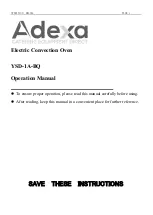
. . . cakes and biscuits are not cooked
after following the times given in the
chart.
Check whether,
^
the correct temperature was set.
^
there has been a change to the rec-
ipe. The addition of more liquid or
more eggs makes a moister mix
which would need longer to cook.
^
the roasting filter had been left in
place in front of the fan when cooking
with "Fan heat
D
" or "Intensive Bake
F
" or was in place for "Auto Roast
E
". In this case baking times might
be lengthened by 10 to 15 minutes.
. . . cakes or biscuits are unevenly
browned.
There will always be a slight uneven-
ness. Product information sheets give a
percentage result for standard brown-
ing tests. These refer to results for one
tray.
If the item being baked is browning
very unevenly, check:
when baking with
Fan Heat
D
:
– whether the temperature was set too
high,
– whether the roasting filter was in
place,
– whether the correct runner height
was used.
when baking with
Conventional
A
:
– the colour and composition of the
baking tins being used. Light col-
oured, shiny, or thin walled tins are
less suitable,
– whether the correct runner height
was used.
. . . spots like rust appear on catalytic
surfaces.
When roasting on the rack, the circulat-
ing air sometimes picks up spices,
which are then deposited on the oven
interior walls. Such residues are not re-
moved by catalytic cleaning, they are
best removed while fresh with a mild
washing up liquid and a soft brush.
. . . the display light does not come
on when a hob control is switched on
(depending on model).
The lamp needs changing.
The lamp must be changed by a Miele
service technician.
. . . "F" and a number appear in the
oven display field.
This combination indicates a fault
^
If
"F3"
appears the core temperature
(roast) probe has a fault.
Remove the probe from its socket
and the message will disappear.
Correcting minor faults
72
Содержание H 373-2 B
Страница 87: ...87 ...
















































